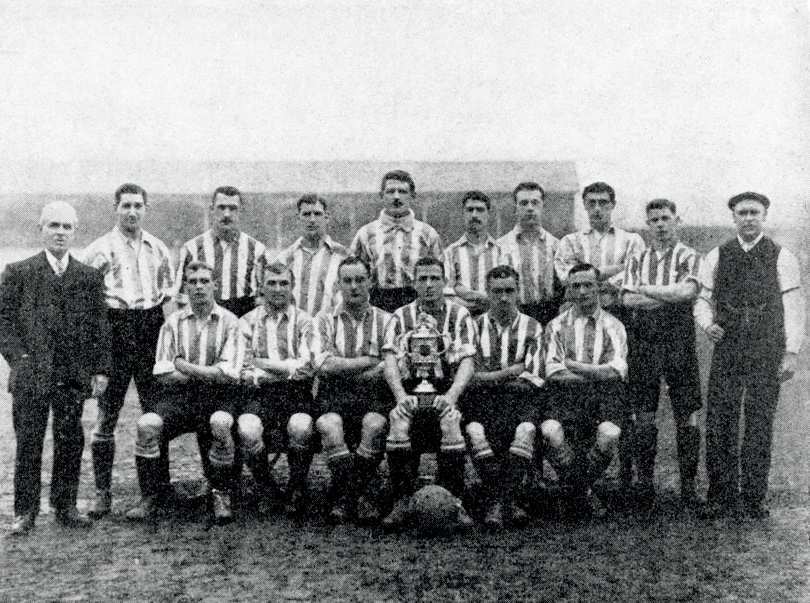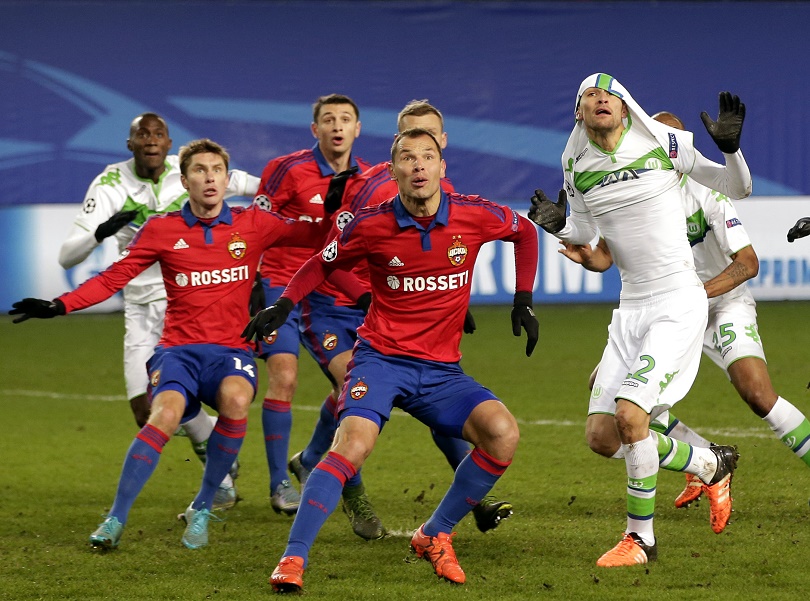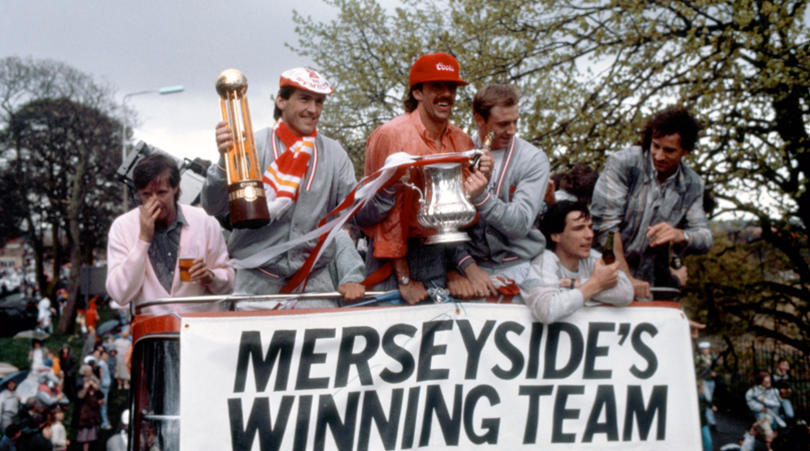What's the point of crossing? Why getting it in the mixer might be counter-productive
Punters love seeing wingers swing balls into the box, but is it actually a worthwhile tactic? As Huw Davies discovers, the stats suggest otherwise...

Not everything in football makes sense. The rivalry between Crystal Palace and Brighton, for instance. FIFA’s accounts. Steve McClaren’s hair. And near the top of the puzzlers pile: how everyone came to the conclusion that the easiest way to score is by plonking the ball onto the head of a striker from 50 yards away, so that he can generate the power and direction to deflect a pass he might not receive towards a goal he isn’t facing.
And yet, crossing is to football what drug scandals are to cycling: inseparable. Every single team in the world does it, even if it isn’t their preferred route to the goal. Remote Amazonian tribes are able to recognise the fabled words ‘get it in the mixer’.
On average in the Premier League, one in every 92 crosses from open play produces a goal. That means if every club in England’s professional divisions each put in a cross, only one team would score (and Aston Villa would probably concede it). Of those 92 balls lobbed, chipped or blasted into the penalty area, 73 don’t find a team-mate, so four out of five centres instantly hand over possession to the other team.
Why do teams persist with this footballing roll of the dice? How did crossing become so commonplace throughout the game? And even if it is now in decline, should the cross be consigned to history?

Birth of the cross
At first, players could pass only backwards or sideways, like knickerbockered Tom Cleverleys, but even as that changed, 19th-century football was all about dribbling towards and even into the goal
The origins of crossing, like the art itself, aren’t easy to pinpoint. The most prevailing tactic in football’s long history wasn’t invented by a ’tache-twiddling Victorian to win a wager. No, crossing’s entrance and entrenchment appears to have been more organic.
At first, players could pass only backwards or sideways, like knickerbockered Tom Cleverleys, but even as that changed, 19th-century football was all about dribbling towards and even into the goal. With defenders rushing towards the man with the ball, a crossfield pass allowed the receiver time to control it and get up a head of steam with his dribble.
Get FourFourTwo Newsletter
The best features, fun and footballing quizzes, straight to your inbox every week.
Nowadays we’d call that switching the play – and when you’re in a 2-3-5 formation with two wingers on each side, what you don’t lack is width. Back then, it was akin to playing fetch with an annoyingly persistent dog: thwack the ball very far away and watch the defender chase after it. Andrew Wilson, a Scottish international and inside-left during the early 20th century, not to mention Sheffield Wednesday’s record appearance-holder and goalscorer, explained: “If you put the ball about like this, defenders don’t know where to have you. They can smother forwards who stick to the ball, but when it is turned this way and that, they are in a quandary.”

Crossing into the box was essentially part of the same tactic. When wideman W. I. Bassett starred as West Bromwich Albion surprised favourites Preston in the 1888 FA Cup Final with their “long passing game” (Tony Pulis may have been involved), it was noted that while his contemporaries “would make for the corner flags before lobbing their centres into the goalmouth”, Bassett “believed in making up ground rapidly and releasing the ball accurately and quickly before the defence had time to recover.” Today, it’s a common ploy to sprint down the wing and cross as defenders race back towards their own goal.
English obsession
Alf Ramsey won the World Cup with his ‘wingless wonders’, having commented as early as February 1965 that “to have two players stuck out wide on the flanks is a luxury which can virtually leave a side with nine men”
Not everyone was enamoured with crossing. Some Victorians wanted a ban on heading; when Sheffield began “butting the ball with their heads” in 1875 it caused “amusement rather than admiration”. Fifty years later, revolutionary manager Herbert Chapman brought success to Huddersfield and Arsenal by largely ditching the cross, though it helped that he had football’s first great playmaker in Alex James (the Scottish inside forward, not the cheesemongering Britpop fop).
But crossing became an English obsession, even as football developed overseas. Wingers defined England in the 1940s and ’50s, providing stars in Stanley Matthews and Tom Finney, and as their popularity dictated team selection, a strength became a weakness. Not that Matthews saw it that way: looking back on England’s 1950 World Cup humiliation and the pair of pastings dished out by Hungary, he wrote: “I blame this on the pre-match talks on tactics that had been introduced by our team manager [...] you just cannot tell star players how they must play.” It’s not me, it’s you.
Alf Ramsey won the World Cup with his ‘wingless wonders’, having commented as early as February 1965 that “to have two players stuck out wide on the flanks is a luxury which can virtually leave a side with nine men”, but it didn’t last.
Football’s love affair with crossing continued into the new millennium – recall England 10 years ago, reluctant to try an alternative tactic for long, desperately scrambling for a left-footed winger. Even now, in a world of false nines and inverted wingers, children learn to cross into areas they can barely reach, next to goals the size of railway tunnels, while all of England’s last nine goals in major tournaments have been the result of a cross into the box.
Blackburn show the merits
As much as the strikers had the burden of putting the ball in the back of the net, Jason, myself and whoever else was playing out wide had the burden of creating chances
Is there anything shameful in that, though? Crossing can be effective, at least sometimes (more on that later), but also a thing of balletic beauty. There was an equine grace about Andy Carroll’s leap to power a Steven Gerrard cross into Sweden’s net at Euro 2012, and Wayne Rooney’s equalising tap-in from a Glen Johnson centre against Uruguay two years later finished off a brilliant team move that Johnson himself had started. Crossing isn’t just about lumping the ball into the box; indeed, Rooney’s leveller in Sao Paulo showed that the ball needn’t leave the floor.
“It’s not always about heading the ball,” says Jason Wilcox. Now managing Manchester City’s Under-18s, the former winger was an instrumental part of Blackburn’s Premier League triumph in 1994/95, supplying opportunities for Alan Shearer and Chris Sutton opposite fellow wideman Stuart Ripley. “If you look at the strikers’ goals in that season,” Wilcox continues, “there were an awful lot of finishes on the floor. We were taught that you don’t always have to travel to the byline to get a cross in.
“Stuart was more direct than me. I was more of a passer, whereas he was an out-and-out winger. But that’s not to say my job wasn’t to get crosses in, because it was.”
Blackburn scored 80 league goals that season, and 34 of them came directly or indirectly from a cross of some kind. Include domestic cups and that figure’s 40 of 88 – nearly half, according to the FFT abacus.
“We had two top-quality strikers so it was a case of feeding them,” Ripley recalls. “We were the supply line, getting crosses into the box. It wasn’t rocket science, to be honest! As much as the strikers had the burden of putting the ball in the back of the net, Jason, myself and whoever else was playing out wide had the burden of creating chances. And believe me, if we didn’t create them, we got told about it.”
Delivering and converting crosses became second nature to Blackburn’s players. “It was instinctive,” says Wilcox. “I knew that once I’d got half a yard, the strikers would be in there, and they knew that once I’d got half a yard, the ball was coming in.” Dipping outswingers, dangerous diagonals, cutbacks from the byline – defenders fell in thrall to them all.
But that was then and this is now; as Ripley himself admits, “Football’s moved on in the last 20 years.” So, is delivering the ball in from wide areas still a worthwhile tactic in 2016? It’s time for some cross examination.

Role reversal: Shearer crosses, Ripley scores
Inefficient approach?
Between 2006/07 and 2013/14, Premier League teams averaged 18 open-play crosses per match, of which only four hit a team-mate and even fewer prompted a shot on target
Those who distrust data’s place in modern football will be distraught to hear of ‘Zone 14’. Despite sounding like an Ed Wood B-movie, it’s increasingly popular in coaching circles.
If you split a pitch into 18 zones – and why wouldn’t you? – Zone 14 is the central sector outside the opposition area. Basically it’s ‘the hole’, with less potential for bawdy jokes. Coaches encourage players to get into the zone and look for a specific opportunity, instead of passing the ball wide to invite a cross.
The methodology for Zone 14 is flimsy. The studies establishing it are 15 years old, and drew their conclusions from France winning the 1998 World Cup by attacking through the centre – France, who weren’t blessed with great wingers but did have Zinedine Zidane. As Stuart Ripley said: it’s not rocket science.
But statistics do support a narrow approach. Between 2006/07 and 2013/14, Premier League teams averaged 18 open-play crosses per match, of which only four hit a team-mate and even fewer prompted a shot on target. You’ll remember that one in every 92 crosses actually leads to a goal (pay attention, there’ll be a test later), meaning sides score from a cross in open play every five games or so.
It’s not a great ratio, is it? Bundesliga matches average just nine crosses and, coincidentally, more goals. One study claimed that electing to cross actually costs teams and eliminating it altogether would create 300 extra goals per season. That may be a stretch, admittedly.

Changing roles
Their isolated existence also means that today’s widemen must score more goals themselves, and are less likely to be classical wingers than centre-forwards pushed out wide – think Danny Welbeck, Anthony Martial or, if you insist, Arouna Kone
Even so, crossing is less effective than it used to be. Twelve years ago, around a third of crosses in the Premier League found a team-mate. Now, it’s nearer to a fifth. And David Beckham absconded before 2003/04, so no, that’s not the reason.
Blame the proliferation of the lone striker. Frontmen have always been outmanned in the penalty area, but one is the loneliest number. Their isolated existence also means that today’s widemen must score more goals themselves, and are less likely to be classical wingers than centre-forwards pushed out wide – think Danny Welbeck, Anthony Martial or, if you insist, Arouna Kone.
Then there are inverted wingers, who having drifted infield will generally shoot or pass before they’ll unleash an inswinging cross. Cutting inside is encouraged. Compare that to Jason Wilcox’s experience 30 years ago.
“As a 16-year-old I was coming inside far too often,” he tells FFT. “My youth team manager at Blackburn, Jim Furnell, was obsessed with getting me on the outside. But if a full-back knows you’re just going to keep hugging the touchline, you make it a lot easier for him. You become too predictable.”

Instead of crossing, Martial cuts inside and scores against Liverpool
Defensive struggles
Many of them fail to stop crosses despite their numerical advantage, says Martin Keown, who was part of Arsenal’s defence when they last won the title in 2003/04
Today’s wingers can’t just cross. Why pick a one-trick pony in the hope his outswinger picks out one man in five, when you could have a player who links play, creates space, threads through-balls and scores goals?
Ripley happily admits that wingers “are much better now than when I was playing – they’re more rounded players, and more technically gifted.”
Old-school wingers – so described as if they wear smoking jackets and puff on a pipe – have a shelf life. That’s why Antonio Valencia became a full-back and Aaron Lennon has evolved his game at Everton; six goals in 10 games between January and March this year represented his best ever tally across an entire season.
Still, if wingers must adapt or die, so must defenders. Many of them fail to stop crosses despite their numerical advantage, says Martin Keown, who was part of Arsenal’s defence when they last won the title in 2003/04.

Keown deals with a Manchester United cross
“Now that we play mostly with one striker, not two, the first centre-half tends to be detached from the second,” Keown explains to FFT. “He’s not marking anybody. He’s almost a mannequin: get the ball over him and he’s out of the game.
“It’s part of a goalkeeper’s routine to face a number of crosses before the game starts. Central defenders don’t get that opportunity. I can’t remember many times when we practised defending crosses.”
Moyes' ignominy
Manchester United made 82 arguments for it while supporters looked on, mouths agape, as each centre was cleared and bottom-of-the-table visitors Fulham earned a 2-2 draw
If Keown’s right, and teams can nullify the threat with a bit of pre-match practice while the mascots take penalties blindfolded, it doesn’t say much for crossing’s efficacy.
Sunday, February 9, 2014 was a bad PR day for crossing. Manchester United made 82 arguments for it while supporters looked on, mouths agape, as each centre was cleared and bottom-of-the-table visitors Fulham earned a 2-2 draw. “I hadn’t headed that many balls since the Conference,” reflected Fulham’s 6ft 7in centre-back, the aptly named Dan Burn. It was the nadir of David Moyes’ 10-month tenure at Old Trafford, and he took crossing’s reputation down with him.
Without a plan, deliveries from wide areas amount to hoping for the best with no reason to be hopeful. It’s buying a ticket to a lottery that doesn’t exist. Defenders aren’t worried.
“You lick your lips and go in ready for it,” says Rio Ferdinand, an unused substitute in that infamous game. “I enjoyed battles where you had to defend high balls and deep crosses.” Keown concurs: “You never get complacent, but I was always comfortable dealing with crosses.”
Moyes conceded his team “could’ve taken a bit more care with some deliveries” (Ashley Young, Wayne Rooney and Rafael completed one cross each from a combined 38 attempts) but said they “deserved to win by a hundred miles”, choosing a unique way to measure a winning margin in football, and emphasised that “Manchester United play with width and cross the ball – that’s in the genes here”.
Reliant on fortune
Crossing makes luck a factor, levelling the playing field when you’re the better team
Just like his wingers, Moyes was wide of the mark. Yes, Alex Ferguson once said, “We like wingers at Manchester United” and yes, he had Beckham and Giggs, Kanchelskis and Sharpe, but he could adapt. Ferguson’s last truly great team saw Cristiano Ronaldo, Carlos Tevez and Rooney rotating upfront in a 4-3-3.
Most revealingly, Moyes lamented: “We need the fortune to change.” Precisely. Crossing makes luck a factor, levelling the playing field when you’re the better team. Both of United’s goals came from the ball bouncing around the box like a drunk in a giant pinball machine.

A scrappy goal against Fulham
Many old-school thinkers like that element of chaos. Earlier this season, ex-Manchester City winger David White took issue with Jesus Navas “trying to pick out the perfect cross every time”.
“He over-thinks everything,” declared White. “Just drill it into the box and see what happens. I was sometimes criticised by managers but never for putting in a great cross when no one was there.” You suspect incoming City coach Pep Guardiola might see things a bit differently.
Keown says times have changed. “In the old days,” he explains, “more teams put the ball into that corridor of uncertainty. There wasn’t a player there, but they put it into an area and asked questions. Graham Taylor [Keown’s manager at Aston Villa] would ask wingers: ‘How many crosses have you made in the first half?’ He’d be looking for at least a dozen per game from each winger.
“But you’re not necessarily picking someone out. Sometimes you see the ball go across the box and say, ‘Somebody should be getting on the end of it’ – but how are they going to do that? You have to say: ‘That wasn’t a good ball’.”

Keown gets on the end of another cross
Is crossing dead?
Football is learning, and fast, that to cross is to surrender control. Spain won Euro 2008 with a tournament-high 450 passes per game; by Euro 2012, 15 of 16 teams averaged more than that, while Spain triumphed not just without a striker but without a forward of any kind. Crossing in the Bundesliga has dropped 25 per cent in the last seven years, and the Premier League is following its lead, albeit slowly.
Control possession; control the game; control your destiny. More and more managers are deciding that crossing leaves too much to chance. As one put it: “[Passing] is more deadly, if less spectacular, than the senseless policy of running along the lines and centring just in front of the goalmouth, where the odds are nine to one on the defenders.”
Who said it? Herbert Chapman, 90 years ago. Maybe football isn’t so quick to learn after all.
This feature first appeared in the May 2016 issue of FourFourTwo magazine. Subscribe!
Huw was on the FourFourTwo staff from 2009 to 2015, ultimately as the magazine's Managing Editor, before becoming a freelancer and moving to Wales. As a writer, editor and tragic statto, he still contributes regularly to FFT in print and online, though as a match-going #WalesAway fan, he left a small chunk of his brain on one of many bus journeys across France in 2016.

